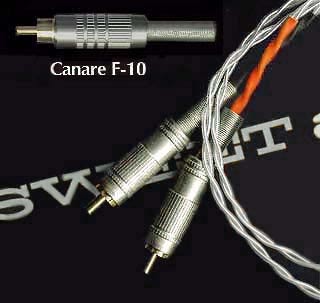This is an archived copy of a review no longer on line

Stager Silver Solids Interconnects
Date posted: March 29, 2003 Sugg. Retail: $189 US pr (2 metre, as tested) Manufacturer: Stager Sound Systems, 159 West 85th Street, New York, NY 10024-4471 (212) 595-4065 Stager Sound Systems is basically a PA company who do the sound for some big shows, with these pure silver (99.9995%) braided interconnects (in various lengths that I’ll outline below) an audiophile sideline. They’re also an audiophile sound reinforcement company, according to their web site home page: “Stager Sound Systems is engaged in the rental and operation of high fidelity sound reinforcement systems and audio-visual systems in and around New York City.” “Stager Sound Systems is unusual in that we carry expensive studio grade microphones in order to maintain state-of-the-art audio fidelity from beginning to end. We are currently providing the sound system and mixing for the Naumburg Orchestra Concerts in Central Park, as we have been doing since 1995.” That’s music to my ears, after walking out of a deafening Bonnie Raitt concert last spring. I was beginning to think that high fidelity PA was an oxymoron (the moron being the deaf guy at the mixing console). The Stager Silver Solids are made of 24-gauge solid core silver coated in “translucent Teflon”, with Canare F-10 RCA connectors, a single such wire for + and ground braided in a manner not dissimilar to that of Kimber AGDL silver cables, but with fewer insulated strands and obvious evidence of hand braiding (Kimber’s braiding is done on precision machinery, and is neater and tighter). The Silver Solids are also available in balanced configuration (also unshielded) terminated with Switchcraft A3F/M XLRs. Longtime readers will know that Audio Ideas Recordings has a 50-foot 4-microphone snake of Kimber silver that is also balanced but unshielded, and my experience is that it cannot be used in high RF areas. In such situations we use our similar WireWorld Meteor snake, which is silver-coated copper and is shielded. But there are advantages to unshielded interconnects, as well as drawbacks like hum and RF sensitivity, in that they do not exhibit any capacitance between shield and conductor(s), and therefore transmit purer, more time coherent audio. This can also be a factor with digital transmission in terms of reducing possible reflections that cause jitter at the cable’s output. And, in fact, I used the Stager Solids more as digital cables (2-metre coaxials are very handy when playing with complex home theatre equipment). They worked very well as digital cables with Dolby Digital or 2-channel PCM, with a clear sound in the decoded output and no digital anomalies or dropouts. I can’t find any other reviews that evaluated them digitally, but I did find that there was some dissension about their analog characteristics, writers only agreeing on the very clean, open midrange, and extended but not sizzly top end, characteristic of silver. One Audio Review contributor commented on their lean but extended bass, while SoundStage’s Doug Schneider thought it was a little fat and bloated. Neutrality is not as common as I would like in high end systems, especially those of capricious reviewers, who are swapping gear in and out all the time. In other words, I’m inclined to suspect that they were in fact reviewing their latest speakers, or a warm and fuzzy tube amplifier, or even comparing them to their last swapped in cables. I found the Stager
Solids extremely natural and open, with lots
of detail and a sweet top end, amazing
performance at the price, likely to work well
both between sources and preamps, and preamps
and amplifiers, unless any of these components
is itself overly bright. Andrew Marshall
|